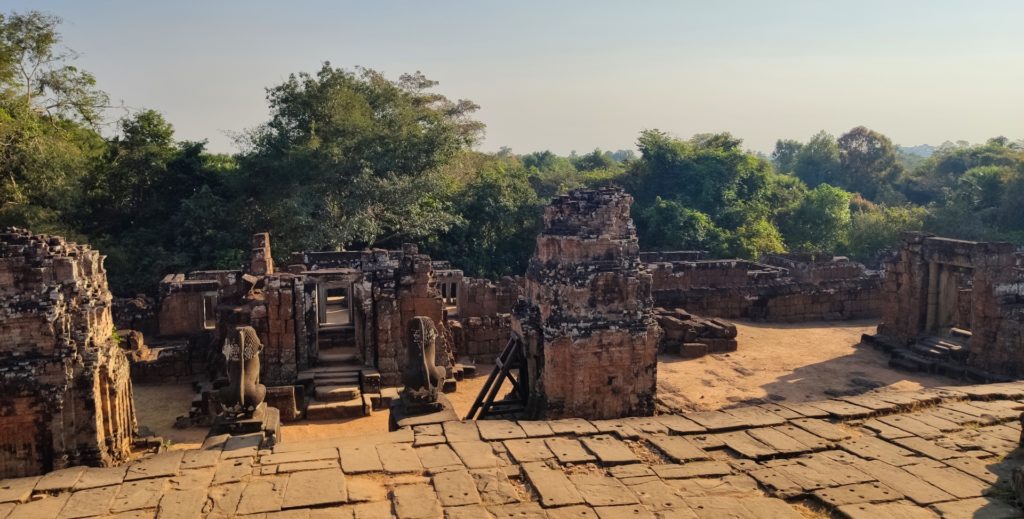Ost Mebon – a temple in honor of Shiva
The temple complex of the East Mebon in Siem Reap was commissioned by the ruler Rajendravarman II to his architect Kavindrarimathana in the middle of the 10th century and completely built by him in the same century. According to the inscriptions, the ruler is said to have based his ideas on the shape of a mountain. Thus, on the artificially created island in the middle of the Yasodharatataka (the Eastern Baray, the water reservoir of the region), an architectural masterpiece built in layers was created, which was dedicated to the deity Shiva.

Interior view of the East Mebon (East Mebon)
Today, the moat around the temple has dried up, and instead the East Mebon is surrounded by rice fields. The island cuboid is oriented so that each of its sides faces exactly one of the four cardinal directions.
The Eastern Mebon was one of the many structures built by Rajendravarman II when he decided to leave behind the former capital of Koh Ker and establish a “new” capital (which had already been built on and settled in earlier times) in the Khmer region. Thus, the king dedicated the temple to his two parents, immortalizing Shiva in the guise of the father and Parvati in the guise of the mother.
The temple complex extends over a total of four levels and was built of sandstone, brick and laterite, with its footprint measuring only about 126 meters by 121 meters. Since there are five towers on the uppermost level, it is reasonable to assume that the building was meant to symbolize Mount Meru (the world mountain that is at the center of the universe of Hindu, Buddhist and Jain mythology), since the latter also had five peaks and it was a common building pattern at the time of construction. Scientifically, however, this assumption cannot be confirmed, as the temple’s inscriptions are somewhat cryptic in this regard.
Architecturally, it should be noted that the imposing temple complex was built in the then emerging Pre-Rup style, which owes its name to the temple of the same name, which was opened only a few years after the Eastern Mebon.
Even today, the Eastern Mebon can be visited easily. Particularly beautiful and unusual are the relief work on the door pillars and on the sides of the doorways, as well as the numerous statues and columns. In total, there are eight elephant columns located on the first and second levels, as well as 16 pairs of lions attached to the stairs. Especially because of its local proximity to the many other sights and monumental buildings in Siem Reap, the Eastern Mebon is definitely worth a visit.